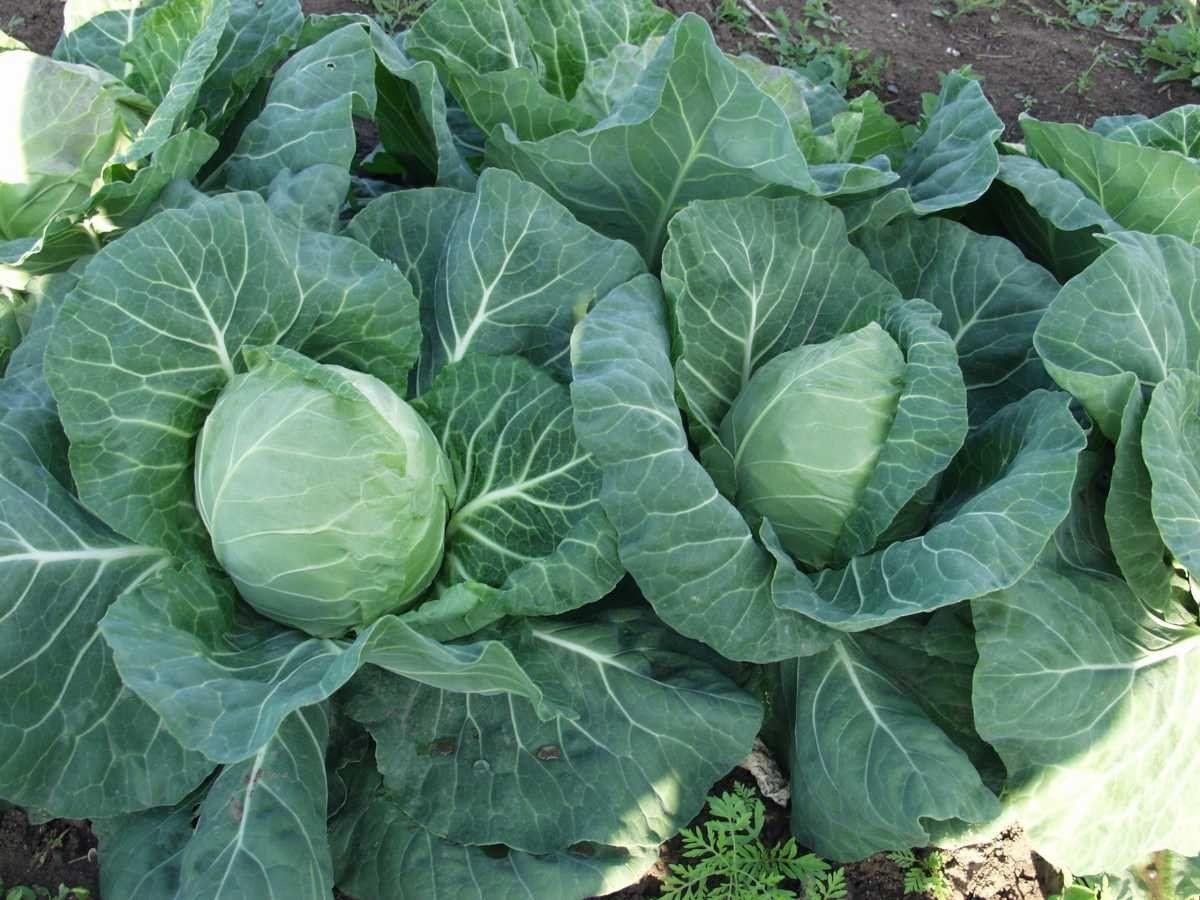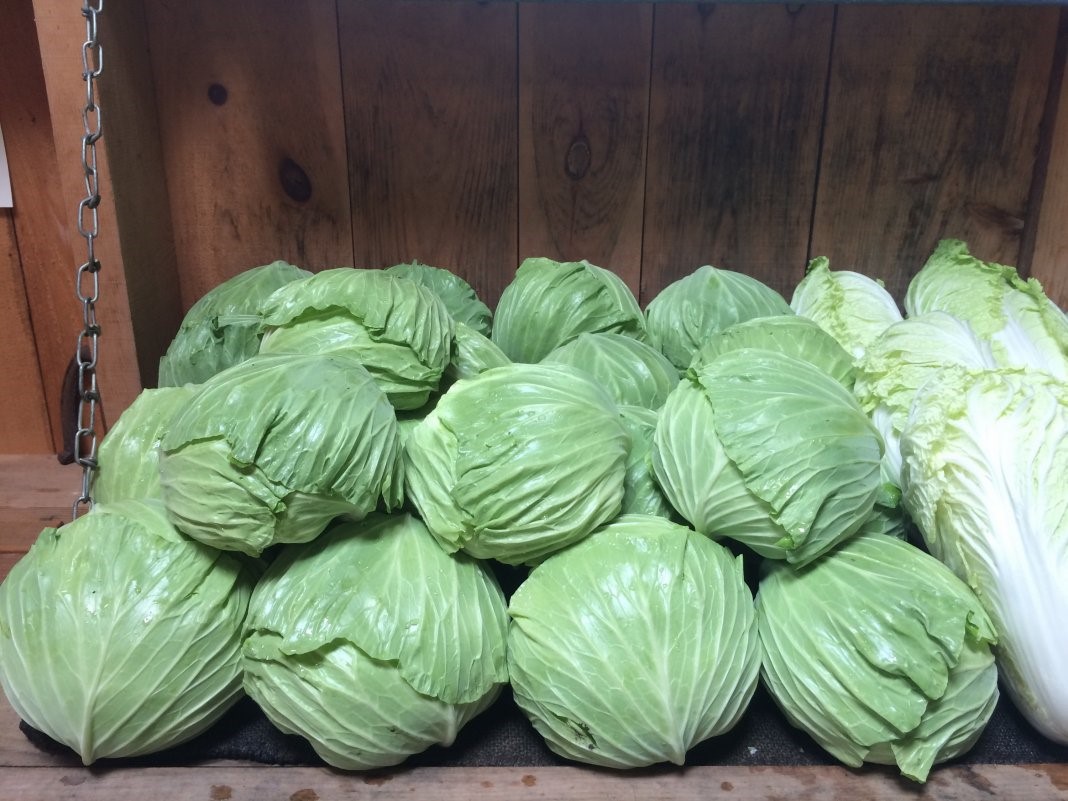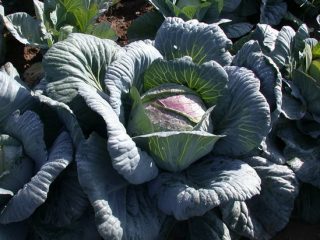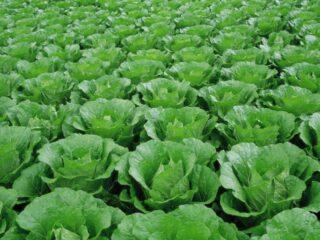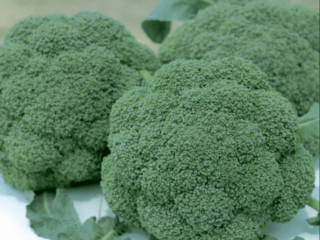Content
Dutch cabbage has proven itself well among professionals and amateurs. It is characterized by high resistance to adverse external factors and good yield. And the variety of species, depending on the ripening period, allows you to grow vegetables of this selection in different regions of the country and be sure of an excellent result. To achieve maximum productivity, you need to pay attention to the recommendations of manufacturers of certain varieties.

Dutch cabbage is characterized by its versatility
Pros and cons of Dutch cabbage varieties
Dutch varieties of the popular vegetable have a number of advantages, which sets them apart from species bred by other breeders. This is achieved through careful selection of seedlings with stable characteristics that they retain under different climatic conditions.

Planting material is of high quality
The main advantages of Dutch cabbage:
- stable fruiting;
- versatility of application;
- wide range of species presented;
- low sensitivity to temperature changes;
- increased immunity to diseases and pests;
- compactness of plants;
- the ability to get a good harvest even on a small plot;
- long-term storage;
- excellent taste;
- undemanding to soil composition;
- high level of head ovary.
Flaws:
- increased demands on fertilizing;
- the need for regular watering of plantings.
The best varieties of Dutch cabbage selection
The range of varieties expands every year, as breeding work to develop new hybrids is constantly underway. However, there are certain types that are especially popular among gardeners and professionals. This is explained by the fact that they are able to show high productivity in regions with different climates.
Early varieties of Dutch cabbage selection
Early types of white cabbage are characterized by a short growing season. The harvest has time to ripen starting in the second half of June. Early varieties of this healthy vegetable are characterized by a loose structure of the heads, since the heads of cabbage consist of tender, juicy leaves. This variety is great for making fresh vitamin salads.
The best varieties of Dutch selection of early cabbage:
- Farao F1. The duration of the period from the germination of cabbage seeds to the technical maturity of the fruit for this hybrid is 63-65 days. Farao is not very susceptible to short-term lack of moisture and nutrition in the soil, but not for a long time, and to dense plantings. Forms forks up to three kilograms. The heads of cabbage are round, rich green in color on top. When cut, a moderately loose structure and a white core are visible. The hybrid does not lose its commercial qualities when transported over long distances and is resistant to cracking.
Farao F1 maintains leaf density during heat treatment
- Parel F1. An ultra-early Dutch hybrid, which is ideal for obtaining early marketable products. Parel has increased resistance to fork cracking. It is able to preserve its commercial qualities by remaining in the garden after the heads of cabbage have fully ripened for 10 days or more. The yield of Parel F1 cabbage is 5-6 kg per 1 sq. m. The weight of the forks is on average 2 kg. They are ready for harvest two months after the seeds germinate.
Early Parel cabbage is productive in different regions
- Ethma F1. Considered one of the earliest species. The collection of ripe heads of cabbage can be carried out from June 5 to June 15. Forms moderately dense rounded forks weighing 1.2-1.5 kg. The heads of cabbage are covered with leaves of a rich green hue on top, and snow-white inside. The variety is not suitable for cabbage rolls, since its leaves lose their elasticity after heat treatment.
When planting Etma white cabbage, it is recommended to adhere to a 30 by 60 cm pattern
- Musketeer. The variety produces a harvest two months after seed germination. Forms forks with a regular round shape, weighing 1.2-1.7 kg. The yield of Musketeer cabbage is 8 kg per 1 sq. m. This Dutch hybrid does not suffer from short-term lack of moisture, and its fruits do not crack even during prolonged rainy weather.
Musketeer is suitable for cultivation in all regions of the country
- Resistor. An early type of white vegetable that is capable of showing consistently high productivity in the Central and North Caucasus regions. Forms a low-growing rosette consisting of medium-sized leaves. The resistor is little susceptible to temperature changes. The shade of the upper leaves is green. Medium density forks, weighing 0.8-1.2 kg.The yield of Rezistor F1 cabbage varies from 2.1 to 5.4 kg per 1 sq. m. The harvest ripens in 90-100 days from the moment the sprouts appear.
Cabbage Resistor is absolutely resistant to fusarium
Mid-season Dutch cabbage varieties
This variety of white vegetable is characterized by moderate density of forks and a sweetish taste. Mid-season varieties can be used for fresh consumption, like early ones, but they have thickened leaves that tolerate heat treatment well. These types of white vegetables have a longer shelf life of about 2-4 months.
The best varieties and hybrids of mid-season cabbage of Dutch selection:
- Hermes. Hybrid healthy vegetable. Hermes is characterized by homogeneous, aligned heads of cabbage, as well as a high content of useful components. Forks retain commercial quality while standing for up to 45 days from the moment of full ripening. The duration of the period from seed germination to harvesting of ripened fruits is 107-110 days. Hermes cabbage has a raised rosette. On top, the covering leaves have a dark green tint with a bluish tint. The middle of the fork is light cream. The productivity of the Dutch hybrid Hermes is 4.6-4.8 kg per 1 sq. m.
Short-term drought does not affect the development of Hermes fruits
- Krautkaiser. This mid-season hybrid is distinguished by its powerful growth force and non-lodging compact rosettes formed from a small number of leaves. Krautkaiser cabbage plates are medium, obovate, slightly concave. They are folded and wrinkled.The leaf color of Dutch Krautkaiser cabbage is blue-green with anthocyanin. The hybrid's heads are medium or large, flat-round in shape, weighing 3.2-4.8 kg. The yield is 5.7-12 kg per 1 sq. m. Ripe fruits are ready for harvesting 127-160 days after the sprouts appear.
Krautkaiser white cabbage is severely affected by clubroot
- Rinda. This is a hybrid form of Dutch cabbage, characterized by a compact, semi-raised rosette. The forks are aligned, uniform, rounded, and have an average density. Their weight is 3-5 kg. The heads of cabbage of the Rind hybrid are yellowish-white inside. The duration of fork ripening from the appearance of the first shoots is 120-130 days. Ripe forks remain fresh for 2-4 months. The fruits of the hybrid do not crack, and the plant itself is resistant to bolting. Easily adapts to any climatic conditions.
Rinda cabbage produces its harvest almost simultaneously
- Fundaxi. This variety of mid-season white cabbage vegetable has a raised rosette. The covering leaves of the forks are gray-green in color. The plates of the hybrid are slightly wrinkled with a slightly wavy edge. The heads of cabbage are round-flat, whitish in cross-section. Fundaxi fruit weight is 1.8-2.2 kg. The number of commercial heads of cabbage is more than 90%.
Fundaxi cabbage shows maximum performance in the central regions
- Satellite. Characterized by large heads of cabbage weighing 3-6 kg. The duration of the period from the appearance of sprouts to the technical maturity of the fruit is 160-170 days. The leaf rosette of Satellite cabbage is raised. The plates are gray-green, bubbly, and have slight wavy edges. Heads of cabbage are medium dense, round, flattened on top.When cut through the fork, the Dutch Satellite cabbage is yellowish-white. The hybrid has an excellent taste, does not lose its marketability even during long-term transportation, and remains fresh for up to four months.
White cabbage Satellite is little susceptible to diseases
Late cabbage varieties of Dutch selection
These types of white vegetables are characterized by a long growing season of five or more months. This allows them to accumulate a large amount of vitamins, micro- and macroelements. The harvest of many of them can be stored until the new season, and the taste of the vegetable only improves during the storage process. Late varieties of Dutch cabbage are suitable for pickling and tolerate heat treatment well. Fruit harvesting is recommended at the end of October.
The best varieties of late-ripening Dutch cabbage:
- Bingo. This type has a raised leaf rosette. The heads of Bingo cabbage are round, leveled, smooth, and half-covered. The covering leaves of the forks are slightly bubbly, green with a gray tint. Dutch white cabbage Bingo F1 cut white. The weight of the heads of cabbage varies between 1.5-1.7 kg. Bingo marketable yield is 3-4.3 kg per 1 sq. m. The duration of the period from seed germination to harvesting the fruits of the hybrid is 165-178 days.
Bingo is suitable for fresh consumption and processing
- Bartolo. The hybrid has a raised medium or large rosette. The leaves are concave, obovate. They are green in color with a blue tint. The edges of the plates are wavy and notched. The forks of Dutch Bartolo cabbage are dense, rounded with a lot of covering leaves. Their weight is 1.6-2.5 kg.The productivity of the Bartolo hybrid is 3.7-5.7 kg per 1 sq. m. The period from the appearance of the first shoots to the technical maturity of the forks is 167-174 days.
Dutch hybrid Bartolo is susceptible to cabbage fly attack
- Galaxy. A high-yielding type of white vegetable, the fruits of which reach technical maturity four months after transplanting the cabbage seedlings to a permanent place. Galaxy is characterized by dense, rounded forks, the weight of which can reach 5.5 kg. The hybrid has a high content of ascorbic acid and is well preserved until spring. The color of the forks is green on top, yellow-white on the inside. The yield of marketable plugs for this Dutch cabbage is more than 90%. The variety easily tolerates short-term lack of moisture.
Galaxy cabbage gives a good harvest even on depleted soils
- Aggressor. A common hybrid of Dutch selection, the heads of cabbage are ready for harvest 130-140 days after germination of cabbage seeds. The Aggressor's forks have a rounded shape. Their color is dark green on top, snow-white inside. This Dutch cabbage easily tolerates short periods of drought. The harvest remains marketable during transportation and is stored for more than six months under certain conditions.
The aggressor has a high level of seed germination
- Ammon. This hybrid is characterized by round or round-flat fruits. Forms a compact raised medium rosette. The forks are grey-green on top and snow-white on the inside. The weight of the heads of Dutch Ammon cabbage varies between 4-6 kg; they are well stored until the new season. The duration of the period from the appearance of sprouts to the achievement of technical maturity of Ammon fruits is 140 days.The hybrid is absolutely resistant to fusarium.
Ammon fruits have an excellent internal structure
Dutch varieties of cabbage for pickling and storage
Dutch varieties of white cabbage, which are suitable for pickling, are especially popular among gardeners. They contain a large amount of sugar, which ensures the fermentation process to obtain a quality product in the end.
The best varieties of Dutch cabbage for pickling:
- Megaton. It is characterized by dense, round heads of cabbage that are silver-green on top and white on the inside. The average weight of forks is 3-4 kg, and individual specimens can weigh up to 10-15 kg. The leaves of the Dutch cabbage Megaton are large, round, slightly concave, with a wavy edge. The rosette of this hybrid is large, horizontal or raised.
Megaton is suitable for private and industrial cultivation
- Jubilee. Late-ripening Dutch hybrid, characterized by high productivity. The duration of its growing season is 120-140 days. The forks are light green on top and snow-white inside. The heads of cabbage are round in shape, have a good taste, and weigh 2-4 kg. The hybrid tolerates short-term lack of moisture in the soil and transportation well.
Jubilee can be stored for up to seven months
- Adapter. A mid-late Dutch hybrid that is excellent for pickling. Easily tolerates a lack of nitrogen and moisture in the soil. The duration of its growing season is 120 days. Forms round, dense heads of cabbage that can be stored for up to six months. The covering leaves of the forks are light green, and the inside of the heads of cabbage is white.Cabbage Adapter is resistant to diseases and pests. The weight of the fruit is 3.5-4.5 kg.
The adapter tastes great both fresh and processed
- Amtrak. This hybrid forms a raised, medium-sized rosette. Its leaves are broadly elliptical, concave, slightly vesicular. They have a gray-green color with anthocyanin. The heads of Amtrak Dutch cabbage are dense, round, and even. Their weight is 1.7-2.2 kg. The duration of fruit ripening is 146-170 days. The yield of the hybrid is 3.1-5.5 kg per 1 sq. m.
Amtrak is characterized by the friendly maturation of forks
Features of cultivation
Dutch species of this healthy vegetable show high productivity only if certain rules of care and planting are observed. It is recommended to plant them in open sunny areas. In this case, the bed must be prepared in advance so that the soil is loose and nutritious.
These types of cabbage do not tolerate proximity to weeds and require regular loosening of the soil between the rows. In the case of soil compaction, their development slows down noticeably. Many Dutch types of cabbage can tolerate drought, but experts recommend not to abuse this and water them once a week, soaking the soil to 15 cm.
Also, Dutch white cabbage responds well to fertilizing. It is recommended to do them every 2-3 weeks, taking into account the stage of development of the vegetable. Successful cultivation of crops directly depends on compliance with crop rotation. Dutch white cabbage must be planted in the garden after carrots, onions, and potatoes.Planting a vegetable in its original place can be done no earlier than three years later.
Conclusion
Dutch cabbage actually has qualities that allow you to get a good harvest of vegetables every season. However, you should not count on the fact that these species are able to show high productivity in the absence of proper care. After all, for successful growth of heads of cabbage, they require a sufficient amount of moisture and nutritional components, which also ensures their excellent taste.

